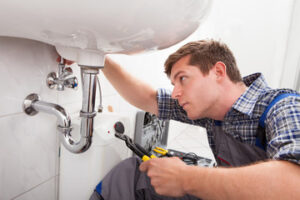Home Care Asheboro NC is important for the health and well-being of an individual. It helps to alleviate stress and provides a sense of security.

Home care costs are often covered by private insurance, Medicare, and Medicaid. Consumers should explore these options and seek guidance from local resources to discover financial assistance programs.
Personalized care is the cornerstone of effective elderly home care and disability support. It provides a balanced combination of independence and professional assistance, promoting a high quality of life for the person receiving home care services. This type of care also includes comprehensive safety assessments and implementation of preventative measures to ensure a safe living environment.
Caregivers are also able to provide companionship, helping to alleviate feelings of loneliness and isolation that can sometimes be associated with aging or having a disability. Moreover, they can connect the person receiving home care to resources and organizations in their community that can help them pursue activities they enjoy, such as social clubs or community events. This active engagement can boost their emotional well-being, combat feelings of isolation, and promote a sense of purpose and fulfillment.
Moreover, home care providers can provide flexibility by adjusting their level of support as the person’s needs change, whether that means increasing the number of visits or hours per day they spend with their client. This can help individuals postpone moving to an assisted living facility and allow them to maintain their preferred lifestyle for as long as possible. It also allows families to rest assured that their loved ones are being properly cared for, which can strengthen family bonds and create a more harmonious family life. In addition, it can also help families save time and money by reducing their responsibilities for caregiving.
Peace of Mind
Home care providers offer consumers and their loved ones peace of mind by providing vital assistance that helps them to thrive. Caregivers provide crucial guidance as they help their clients manage chronic conditions, aid in recovery from illnesses, and prevent hospital readmissions.
Families can also enjoy the peace of mind that comes with 24-hour care, which means that a caregiver will be on call to attend to any emergencies that might arise. Many families find that having a live-in caregiver offers more stability and comfort, but some prefer to have multiple caregivers come in for shifts.
Consumers should seek out a provider that emphasizes compassionate care, cultural sensitivity, and open communication. It is important that the provider understands the specific needs of each individual, and that their services are tailored to those particular needs. The best provider will be able to offer the highest quality of care, while keeping the consumer safe and healthy at home. This type of care is typically covered by Medicare, but private insurance may be available as well. This is a much more cost-effective option than traditional nursing home care.
Relieves Stress
Home care allows individuals to receive the assistance they need while still living at home. This eliminates the stress and strain of having to move to a new environment. This is especially helpful for elderly people who have a hard time adapting to new situations.
This type of care also helps family caregivers avoid burnout by providing respite services to take some pressure off of them. Caregivers that are burnt out can become irritable and impatient, which can lead to behavioral problems in their patients. Home health agencies can help to reduce stress by providing training, mental health support, feedback, recognition, flexible scheduling and user-friendly home care software.
For people who live alone, home care enables them to have someone to check on them during the day and night. This can give their loved ones peace of mind and reduce anxiety about their safety.
For home care workers, a healthy work-life balance is key to reducing stress. This is why it’s important for home health agencies to provide access to employee assistance programs and create a culture that de-stigmatizes asking for help or taking breaks. They can also minimize the risk of burnout by providing regular meetings with their employees, establishing a system of accountability and communication, and implementing user-friendly home care software to streamline processes. This can significantly reduce stress and improve overall job satisfaction.
Boosts Emotional Well-Being
Loneliness and isolation can trigger mental health issues, such as depression and anxiety. Moreover, these issues may lead to physical ailments such as high blood pressure and heart disease. Home care professionals can help prevent these conditions by fostering connections through conversation and other activities. In addition, individuals can maintain their independence and regain control of their lives with the help of comprehensive home healthcare.
Additionally, home healthcare services provide a more cost-effective alternative to assisted living and nursing homes. Most home healthcare programs are paid by the hour, which means that you only pay for the time that your caregiver spends with your loved one. This is a major savings, especially for those who are paying out of pocket or through long-term care insurance.
Comprehensive home healthcare also includes mental health services, which is important for enhancing overall well-being. Caregivers can identify early warning signs of mental health challenges, such as irritability and mood changes, and provide appropriate support to mitigate these issues. Additionally, integrating mental health support into home care can prevent deterioration in physical health and boost self-esteem.
Many people receive home care after a discharge from a hospital or rehabilitation facility (Skilled Nursing Facility). If you are looking for a solution to improve your quality of life, contact your local healthcare provider to learn more about their home health services. You can also ask your doctor or social worker for recommendations.
Increases Independence
Home care provides a valuable alternative to nursing homes, offering a personalized approach that enables older adults to maintain their independence and quality of life. In home care professionals are trained to promote independence in a number of ways, including encouraging social engagement and facilitating physical health. They also assist with implementing simple tools that turn everyday tasks into more manageable ones.
For example, a home care professional may help their patient learn to use a smart speaker that can make calls, play music, and even remind them of medication schedules. Caregivers are also often aware of the importance of fostering self-confidence. They will work to reassure their patients and provide support when needed, but will never take over.
In addition, home care services can include specialized care providers like RNs and physical therapists. This allows individuals to stay in their homes longer and ensures that the most important members of their healthcare team are involved in their care.
For family members who are concerned about their loved one’s safety, 24-hour home care can be a great option. This type of care ensures a caregiver will be available all through the night to respond to any emergencies and help the person stay comfortable. The drawback, however, is that this kind of care is typically more expensive than non-live-in home care. This may be a good choice for those who prefer to have a caregiver with them at all times, but are still willing to pay the extra cost.
Keeps Individuals in Familiar Environments
Home care allows individuals to maintain their independence, enjoy meaningful connections, and experience a better quality of life—all in the familiar environment of their own homes. Non-medical home care offers a wide range of essential services, from assistance with meal preparation and bathing to transportation and housekeeping. In addition, gentle mobility assistance can help reduce fall risks while helping individuals stay active and safe within their own communities.
Providing exceptional customer service is a great way to build brand loyalty and attract new clients. Consider using a live-chat feature on your website to quickly address client questions and concerns, or implementing a home care software platform that connects clients with their caregivers through stakeholder portals. The quicker you can respond to client concerns, the more satisfied they will be.
If you’re thinking about home care for your loved one, be sure to take the time to establish power of attorney and healthcare directives. These legal documents can designate who will make decisions for you in the event that you become incapacitated, and they can also provide peace of mind to family members. Be sure to consult with legal professionals for guidance and support. Lastly, be sure to have an up-to-date first aid kit available in case of emergencies. Keeping this kit well-stocked with supplies like adhesive bandages, gauze pads, antiseptic wipes, scissors, and instant cold packs is vital for safety.



